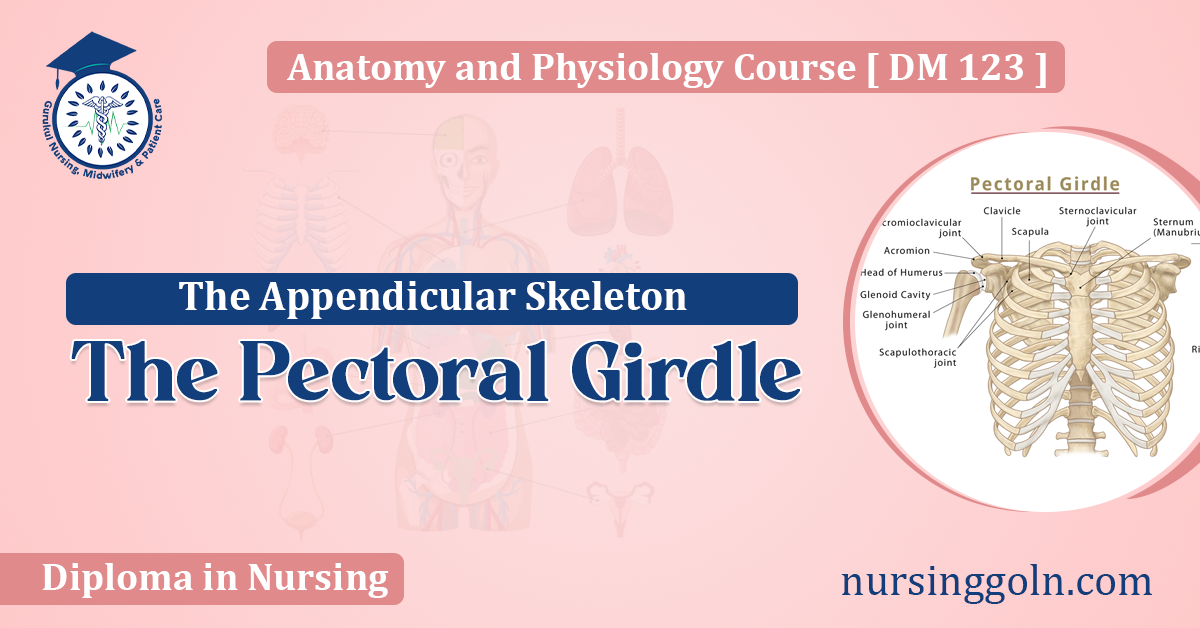The human skeletal system is a marvel of engineering that offers both support and mobility, allowing us to perform a vast array of movements. The appendicular skeleton, which is comprised of the bones of the upper and lower limbs, is connected to the axial skeleton (consisting of the skull, vertebral column, and thoracic cage) through structures called girdles. The pectoral girdle, specifically, serves as the articulating structure for the upper limb, providing a firm yet flexible joint for the arms.
This article delves into the anatomy and function of the pectoral girdle, a significant component of the appendicular skeleton.
What is the Pectoral Girdle?
The pectoral girdle, also known as the shoulder girdle, is made up of two primary bones: the clavicle (collarbone) and the scapula (shoulder blade). Situated in the upper part of the trunk, the pectoral girdle forms a ring-like structure that surrounds the thorax and anchors the arm to the trunk.
Components of the Pectoral Girdle:
- Clavicle (Collarbone):
- Location: It’s a slender, S-shaped bone that horizontally spans the upper thorax between the sternum (breastbone) and the scapula.
- Function: It acts as a brace to hold the arms away from the trunk and prevents shoulder dislocation. It transfers the mechanical force from the upper limbs to the axial skeleton.
- Scapula (Shoulder Blade):
- Location: It’s a flat, triangular bone situated on the dorsal side of the rib cage, between the second and seventh ribs.
- Function: The scapula is responsible for the mobility of the upper arm. Its posterior surface has a spine that divides it into two unequal portions, providing points of attachment for numerous muscles.
Notable Features of the Scapula:
- Glenoid cavity: A shallow socket that articulates with the head of the humerus, forming the glenohumeral (shoulder) joint.
- Acromion: An outward extension of the scapular spine that forms the highest point of the shoulder.
- Coracoid process: A small hook-like structure that offers attachment to several muscles.
Functions of the Pectoral Girdle:
- Support: The pectoral girdle provides a strong base of support for the attachment of the upper limbs to the axial skeleton.
- Flexibility and Mobility: Unlike the pelvic girdle, which is built for weight-bearing and stability, the pectoral girdle is designed for maximum flexibility. This is evident from the numerous muscles that attach to the scapula, allowing the arm a wide range of motion.
- Muscle Attachment: Several muscles responsible for moving the arms, chest, and back are attached to the pectoral girdle. These muscles either originate or insert at the clavicle or scapula, enabling movements like rotation, adduction, and abduction of the upper limbs.
- Protection: While not as pronounced as the ribcage’s protective role, the pectoral girdle shields some of the upper internal organs, especially the top portion of the lungs.
Biomechanics of the Pectoral Girdle:
The human shoulder is one of the most mobile joints in the body, and the pectoral girdle’s design plays a central role in facilitating this. The articulation between the humerus and the shallow glenoid cavity is often compared to a golf ball sitting on a tee—a design emphasizing mobility over stability.
The stabilizing role is primarily played by the soft tissues, particularly the rotator cuff muscles and the tendons and ligaments surrounding the shoulder joint. These structures ensure that the head of the humerus remains in place within the glenoid cavity during arm movements.
Common Injuries and Conditions:
Due to its unique structure and the stresses placed on it, the pectoral girdle is susceptible to various injuries and conditions:
- Fractured Clavicle: One of the most common bone fractures, especially in sports and vehicular accidents. The clavicle is vulnerable due to its subcutaneous location and the absence of muscular or fat coverage in some areas.
- Rotator Cuff Injuries: The tendons of the rotator cuff muscles can become inflamed or torn, often due to repetitive overhead motions or trauma.
- Frozen Shoulder: Also known as adhesive capsulitis, it is characterized by stiffness and pain in the shoulder joint.
- Shoulder Dislocation: Due to the high mobility of the shoulder joint, the head of the humerus can sometimes be forced out of the glenoid cavity.
Conclusion:
The pectoral girdle is a masterpiece of anatomical design, striking a balance between mobility and strength. By connecting the upper limbs to the axial skeleton, it provides the versatility required for our daily activities, from lifting and throwing to intricate hand movements. Understanding its anatomy and functions not only gives insight into the marvels of human physiology but also sheds light on the vulnerabilities that can lead to common injuries. Proper care, strengthening exercises, and understanding biomechanics can help mitigate these risks and maintain the health and functionality of the pectoral girdle throughout life.
